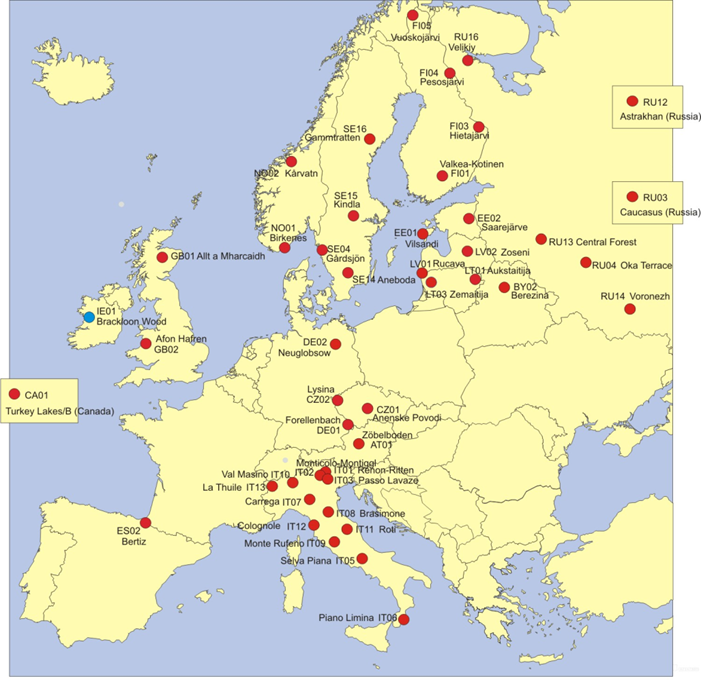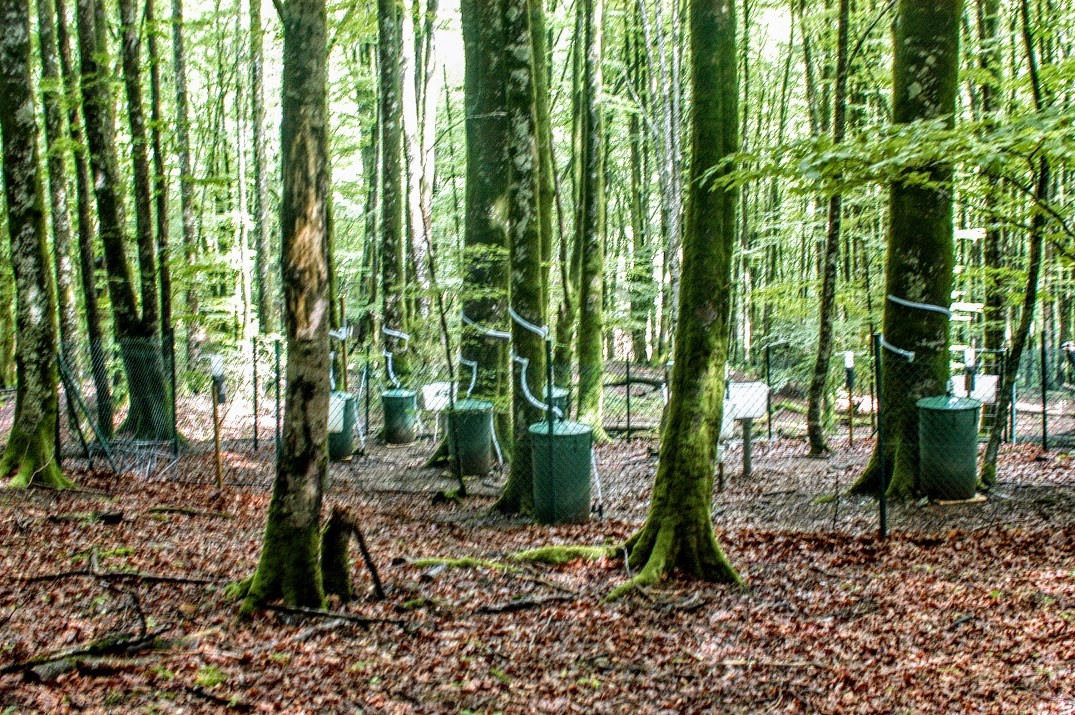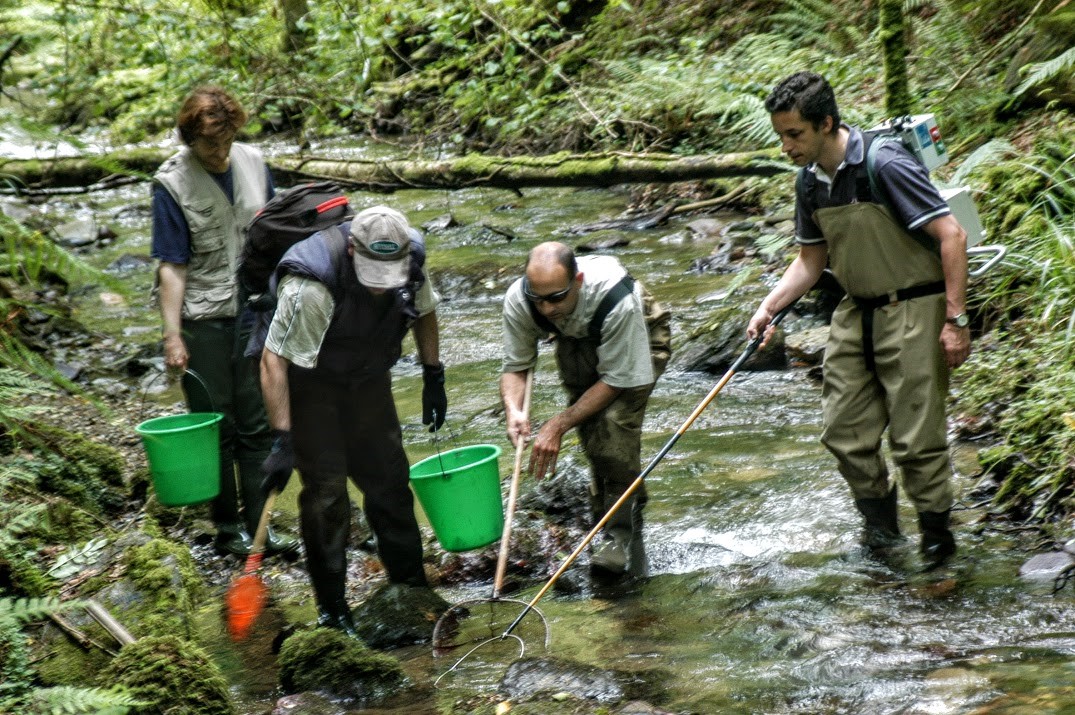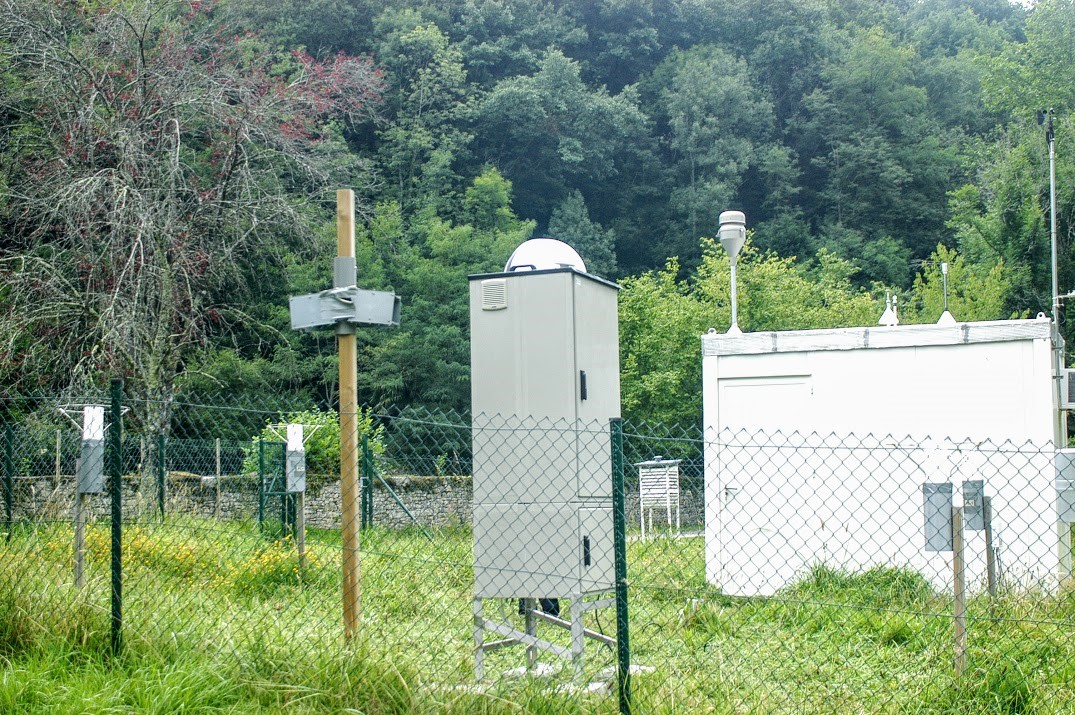Watersheds
The study of biogeochemical cycles and biodiversity in European areas of high ecological value is essential to understand the evolution of ecosystems.
The interdisciplinary program integrated monitoring site(ICP-IM) is part of the effects monitoring strategy of the United Nations Economic Commission for Europe (UNECE) Convention on Long-Range Transboundary Air Pollution (LRTAP) and is part of the group of work on UNECE Effects. Currently, the network of work of the ICP-IM consists of 44 integrated monitoring points in 16 countries. BIOMA manages the only point located in Spain since 2006 and is the National Focal Point and manager of the program in Spain.

The overall goal of integrated monitoring was initially to determine and predict the state and change of terrestrial and freshwater ecosystems in a long-term perspective deadline in relation to the impact of pollutants, especially nitrogen and sulfur. This goal was intended to provide a scientific basis for decision-making on emission control and ecological impact assessment at framework of the UNECE Convention on Long-Range Transboundary Air Pollution (LRTAP). However, the program is now also studying the ecological effects of tropospheric ozone, heavy metals and persistent organic compounds. The program also provides valuable information for examining the impact of climate change on ecosystems, changes in biodiversity and stratospheric ozone depletion, all from an international database with a broad spatial and temporal scope.
One of the priority needs to achieve these objectives is to obtain scientifically and statistically reliable data that can be used for subsequent modeling and decision making. The main goal is to establish consistent time series of environmental variables, in ecosystems with different characteristics, through intensive monitoring of their physical, chemical and biological variables.

To achieve these objectives, the program aims to:
-
Monitor the evolution of biogeochemical parameters and biological responses in small (10-1000 ha) clearly defined watersheds.
-
Distinguish the alteration produced by anthropic action from the variation inherent to natural evolution in natural and semi-natural ecosystems.
-
Develop and apply tools (such as mathematical models) for regional assessment and prediction of long-term effects deadline.
The point located in Navarra consists of a hydrological basin, of approximately 135 ha, located in the Señorío de Bertiz Natural Park and its study includes the mandatory completion of a series of sub-programs that allow understanding the functioning of the ecosystems:
Mandatory subprograms
Subprogram AM: Meteorology
Subprogram AC: Chemistry of the air
Subprogram PC: Chemistry of precipitation
Subprogram TF: Transcolation
Subprogram SC: Chemistry of soil
Sub-program SW: Chemistry soil water
Subprogram RW: Chemistry of runoff water
Subprogram FC: Chemistry foliar
Sub-program LF: Chemistry of the leaf litter
Sub-program VG: Vegetation (intensive plot)
Subprogram EP: Trunk epiphytes
Optional subprograms
MC Subprogram: Chemistry (metals) from bryophytes
Subprogram SF: Cortical Runoff
Subprogram GW: Chemistry groundwater
Subprogram RB: Stream hydrobiology
Subprogram FD: Forest damage
Sub-program BI: Bioelements and indicators of trees
Subprogram VS: Vegetation Structure and Species Coverage
Subprogram MB: Microbial Decomposition
Subprogram TA: assessment of toxicity
Subprogram BB: Bird inventory
Sub-program EM: Edaphic microarthropods
PH Subprogram: Phenology



With the data obtained, detailed reports are prepared every year and sent to the ICP-IM Program Center and to the Spanish Ministry of Ecological Transition, in compliance with the obligations imposed by the members of this international network .
